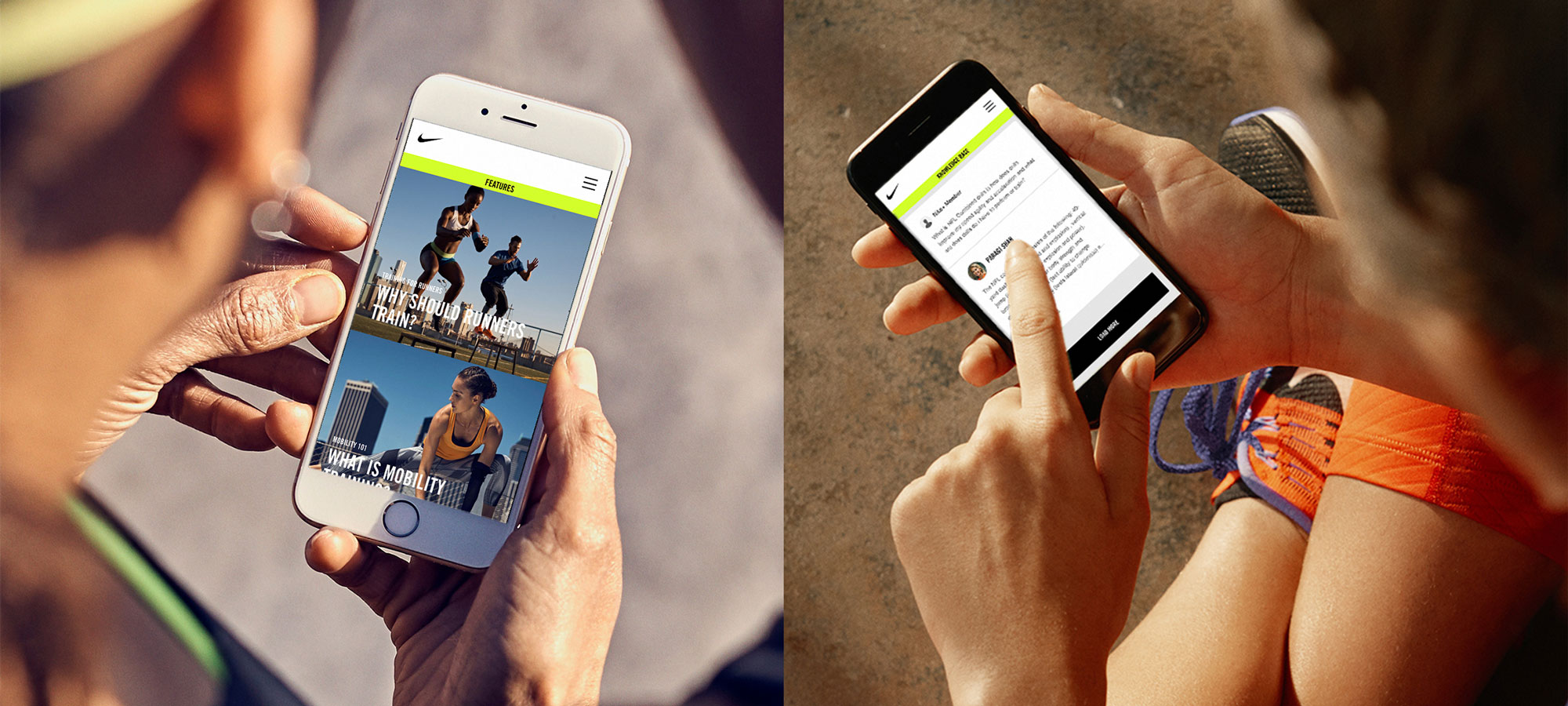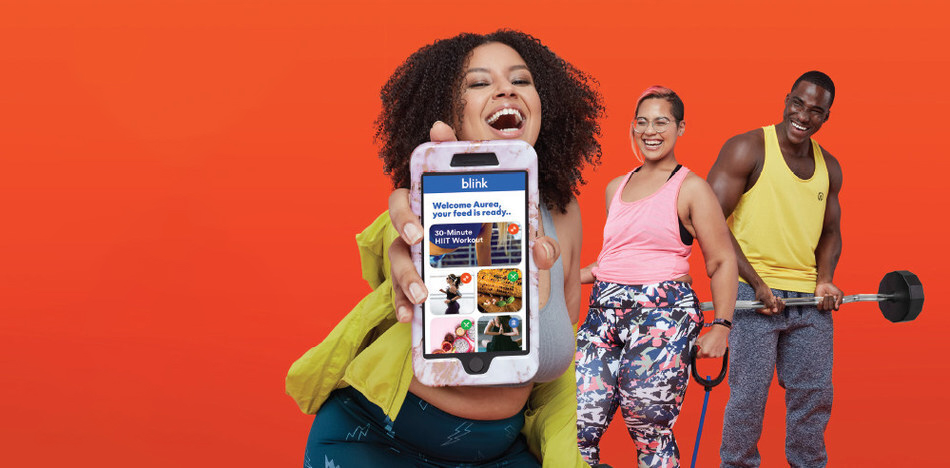The global business community is scrambling to react to lockdown shock. Established strategies, never questioned in the course of a brand’s natural evolution, are now being fundamentally challenged by this extreme and universal shift in human behaviour. While some of these enforced changes in lifestyle are temporary (we hope), post lockdown, we’ll be entering a new normal. The most significant shift for brands will be the acceleration of default digital behaviours and, as a result, the role their digital ecosystems will play in their marketing strategies.
What does that mean for now? Lateral thinking thrives during periods of adversity, so this is an incredibly important time for digital innovation. Brands looking to future proof themselves for the post-lockdown world, where digital is the new normal, will seize the moment.
Elevate experiences to build long-term loyalty.
While some businesses learned the importance of being part of consumers’ lives early on, others still have a lot to learn. Online grocery services are now fundamental to
a successful community lockdown, and businesses set
up to ‘deliver’ on this are experiencing unprecedented demand. So, short-term business is good, but that isn’t necessarily translating into long-term brand love. In fact, right now I care less than ever about who delivers my milk, juice, bread and other essentials. The only criteria for a successful experience is getting a slot and a delivery. It’s the most transactional of relationships, and one that won’t likely result in any long-term loyalty. As I write, I’m concurrently in a queue for Ocado, FarmDrop, Amazon Prime and Sainsbury’s, with an average position of 4,674.
 Picture: AnalogFolk created Nike Trainers Hub, giving unprecedented digital access to Nike’s network of elite trainers around the world.
Picture: AnalogFolk created Nike Trainers Hub, giving unprecedented digital access to Nike’s network of elite trainers around the world.
Be part of lives, not just present in minds.
Lockdown has shone a light on how important it is for brands to make full use of the potential for
digital technology to deepen the relationship with their consumers. It isn’t enough to use it to optimise the journey to purchase, you must also harness the potential to deliver valuable services and experiences to your audiences. After all, deep, value-driving experiences will position your brand in the lives of your consumers, not just make it present in their minds. That’s a difference that’s playing out for brands during the present crisis.
Take one of our clients, Nike, for example. For many years, it has invested in an ecosystem of value- adding digital services. Though part of an overarching membership strategy, these services are not exclusive to Nike customers. This open approach to membership is now paying dividends. Faced with store closures, Nike has become even more open. In fact, in April, it made its paid subscription service, Nike Training Club Premium, free to all, offering over 180 video workouts and tips from Nike Master Trainers. As reported by Bloomberg, this strategy, combined with tailored content to help users train during the Covid-19 crisis, is creating new high-involvement relationships, with user activity reported to have increased up to 80% and digital sales increases of more than 30% in some markets.
What if, while I wait, one of these brands gave me inspirational content and tools for how to flex the food I still have in my cupboard? What if I could scan the ingredients I have in the house and an algorithm could match them to recipes I could make? We’re all more concerned than ever about food waste, so where’s the content on how to increase the storage life of products? Instead, the only thing I’m getting from my queueing experience is more anxiety.
Think differently to up your pace.
Delivering this sort of service doesn’t have to be complicated and expensive. Brands just need to think more creatively about the value their ecosystems offer consumers. Seeking out existing technologies, APIs and content they can leverage, and focusing their effort on plugging those into their infrastructure and creating a unique presentation layer that’s aligned to their brand positioning.
AnalogFolk works with gym brand Blink Fitness out of the US. In just 12 months we’ve launched and scaled a new digital membership experience that expands the value of being a member from just what is extracted from the physical gym. The app offers aggregated and personalised content and tools for fitness, nutrition, training, sleep and mindfulness, making Blink members part of a bigger, bespoke experience.
In order to augment users’ workout data (collected via a smart system connected to Blink gym equipment) with these other valuable datapoints, we didn’t build a new Headspace or Sleep Cycle, we just plugged into established APIs and delivered it all in a uniquely Blink presentation layer, getting an MVP to market in six months that, only 18 months later, is enhancing the brand experience for almost half of Blink’s members
 Picture: The Blink Fitness app is personalised with 18 services including an array of subscriptions & partnerships, helping members to manage their health and wellness anytime, anywhere.
Picture: The Blink Fitness app is personalised with 18 services including an array of subscriptions & partnerships, helping members to manage their health and wellness anytime, anywhere.
Live your purpose.
The whole industry has talked a lot about ‘purpose’ over the last few years. There’s no doubt that it matters, but lockdown has been the ultimate bullshit detector on the issue. Have you been building internal decks focused on how to refine and communicate your brand purpose or have you been actually living it by launching meaningful experiences that serve your customers? The brands who have been living it have seen their efforts rewarded with more engaged customers, who’ve been buying and advocating more during lockdown.
And this approach to a richer brand experience shouldn’t just need to just come from the brand itself. An engaged user base will happily contribute, as British telecoms provider Giffgaff has proved through its self-serving user community. That should be a key test of your user base – are they truly engaged or are they just buying from you? When you create systems that are open to user involvement it’s more efficient, more scalable and more authentic.
That openness should be extended to the actions of the brand, too. A strong brand doesn’t need to do everything itself. Again, Nike is an example here. It had its proprietary Nike+ SportWatch for years, a self-contained ecosystem where you were either in or out. It was an act of enormous confidence to drop that product and pivot to working exclusively on the Apple Watch. Not only
was Apple better at making smart watches, but the shift places a strong brand in a bigger ecosystem of users, allowing people to drop into Nike’s world. The brand gets a bigger audience than ever before and moves people closer to the physical purchase.
Start now.
For brands already focused on this, now’s the time to double down and expand. For those who haven’t, the opportunity to start building shouldn’t be missed. While lockdown shock is a trauma that businesses need to respond to immediately through cost management, the solution isn’t just to retreat. This is a time to rethink how we market and therefore connect with our audiences, in this new, super-digital behavioural landscape.
Modern brands are defined by what they do, not what they say. They’re shaped by all the experiences people have with them. Make your relationship resilient and have something to talk about beyond just the stuff you directly profit from, because businesses with a truly valued relationship with their customers are better placed to weather this storm and come out the other side stronger.
Written by Bill Brock, Founder and Chief Client Officer